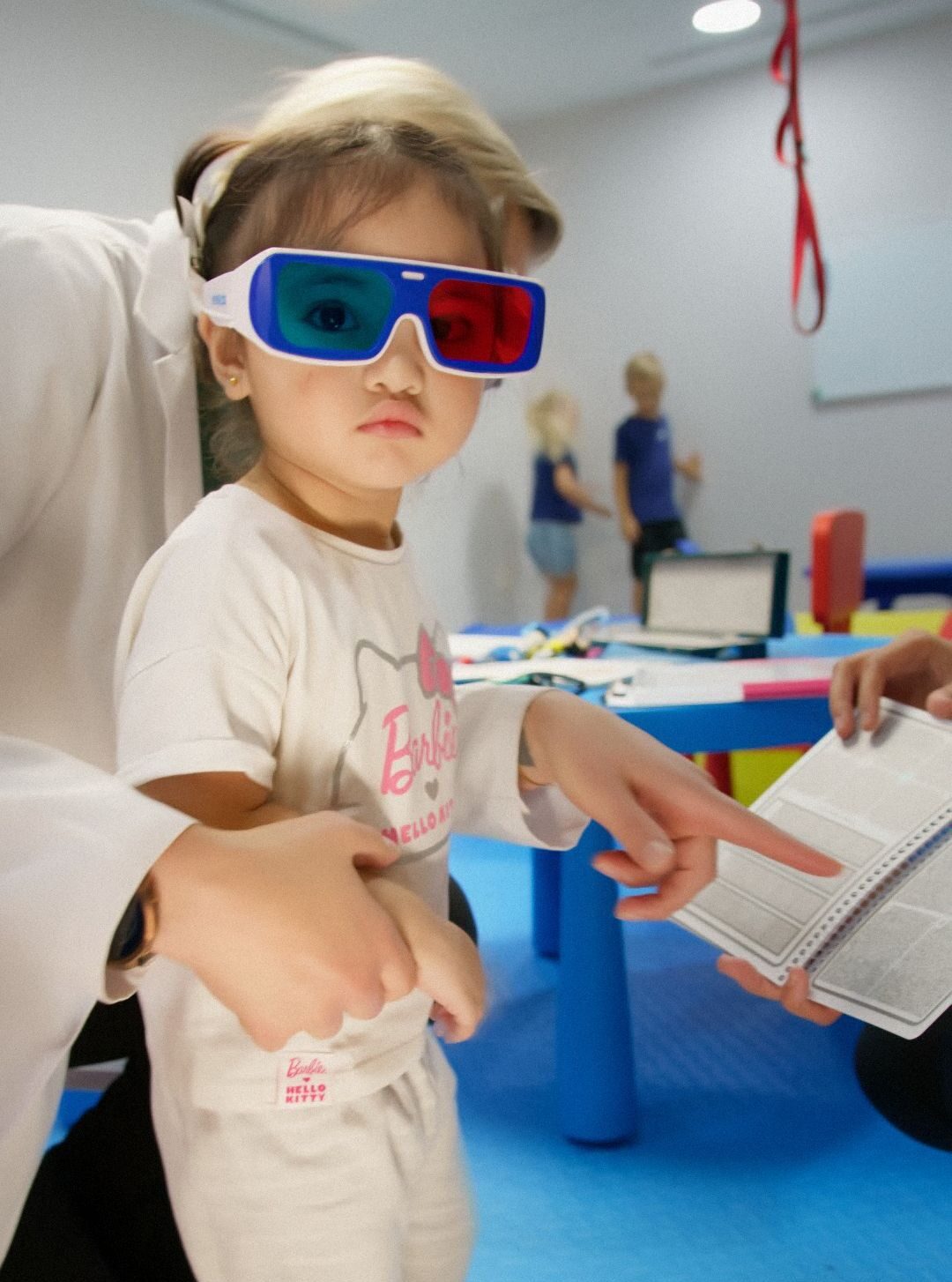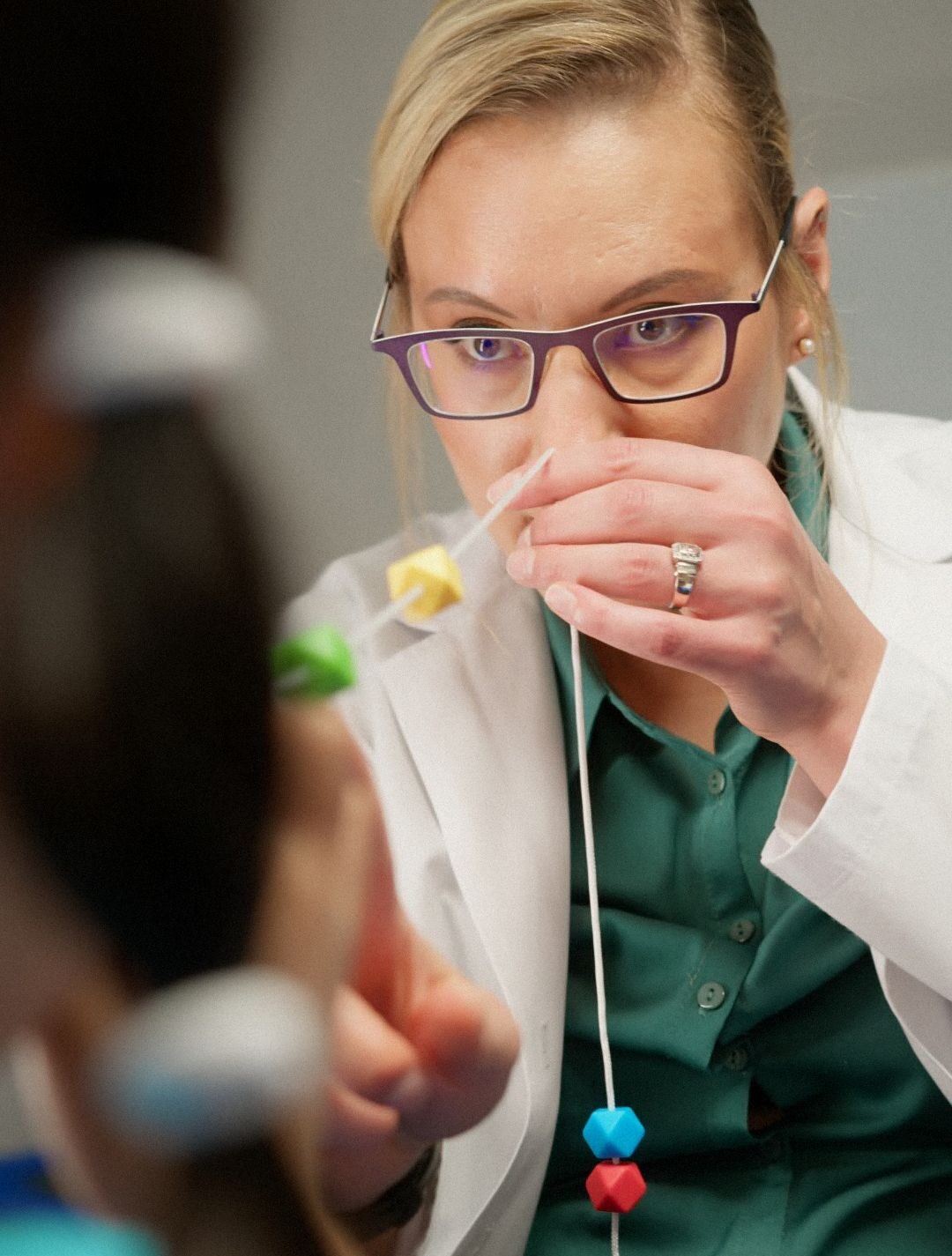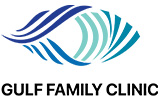Mon - Sat: 8:00 AM - 6:00 PM
Sunday: CLOSED
Vision Therapy in Dubai
Vision therapy is a program that aims to help correct vision problems and strengthen visual acuity and abilities.
Vision therapy can improve visual acuity and enhance visual skills, such as the ability to correctly perceive depth, focus and track objects. It is usually indicated when eye movement disorders, eye misalignment or binocular dysfunctions (when the eyes cannot work in sync or together) cause vision problems.
Vision therapy uses science- and evidence-backed orthoptic eye exercises such as orthoptics treatment aided by other strategies, such as the use of occlusion, training glasses and prisms. These exercises take advantage of the brain’s plasticity or its ability to develop new neural pathways when needed to sharpen, optimise and improve one’s vision despite alignment, binocular or eye movement problems.
Vision therapy is for adults and children. Paediatric vision therapy, in particular, shows great promise for treating vision problems in young children and adolescents. Book a comprehensive vision assessment with our vision therapy centre in Dubai to know more.
Make an Appointment
WhatsApp Us





Vision Therapy - Frequently Asked Questions
What is vision therapy?
Vision therapy is vision rehabilitation; it’s usually described as physical therapy for the eyes. It uses orthoptic eye exercises to overcome vision problems caused by the eyes’ misalignment, uncontrolled movements or inability to work together. Ultimately, vision therapy aims to improve one’s visual acuity and visual abilities, such as depth perception, focusing and tracking.
Aside from orthoptics, vision therapy doctors may use occlusion/patching or other strategies, training glasses, filters, prisms, electronic targets, and balance boards to achieve their desired outcomes. Over time, vision therapy can help your child focus, track and perceive objects better. It can also help prevent complications caused by the eyes being misaligned and uncoordinated or shaking uncontrollably.
What is vision therapy used for?
Vision therapy is used as a method for correcting the vision problems arising from the following conditions:
- Strabismus is a condition characterised by at least one misaligned eye. The eye misalignment means the brain receives and must process two distinct images, one from each eye, causing confusion and vision problems. It has four types based on the direction the misaligned eye is turned: esotropia (turned inward), exotropia (turned outward), hypotropia (turned downward) and hypertropia (turned upward).
- Amblyopia or lazy eye causes symptoms like blurry vision, repeated squinting, poor depth perception, and eye shaking. It is caused by one weak eye (i.e., the lazy eye). Strabismus, when left untreated, can cause the misaligned eye to grow weak; amblyopia can, therefore, be a complication of strabismus.
- Nystagmus is characterised by rapid and uncontrolled eye movements or shaking, making it difficult to fixate or focus on objects.
- Convergence insufficiency is a binocular vision disorder characterised by the eyes’ inability to turn inward simultaneously to focus (i.e., converge) on a nearby object.
- Eye tracking issues are the eyes’ inability to follow objects or letters. Eye tracking problems also make it challenging for the eyes to switch between objects smoothly.
Vision therapy cannot resolve vision problems caused by refractive errors. It is ineffective against myopia (nearsightedness), hyperopia (farsightedness), astigmatism, and presbyopia. These conditions are caused by the eyes’ physical attributes, such as the eyeball being too long or too short, the cornea being overly flat or steep, the eye lens becoming inflexible with age, or the curves of the cornea or the lens being mismatched.
Glasses and various types of contact lenses help for the majority of these Refractive Errors. Other solutions include such as Phakic intraocular lens implantation or other appropriate surgical options may be a more suitable approach in this case. Likewise, vision therapy cannot treat conditions like cataracts and glaucoma.
How much does vision therapy cost?
The cost of vision therapy varies depending on various factors, including the type of vision problem being corrected, the severity of the problem, the specific therapy methods and equipment used, and the length of treatment. The pricing also varies by location and vision therapy centre.
You can get excellent, world-class vision therapy in Dubai for much less than it costs in other parts of the world, such as the United States. Of course, even locally, the cost of therapy will vary depending on which eye clinic in Dubai you ask. Instead of price-shopping, decide based on the track record of a clinic and the credentials of its vision therapy doctors. Vision Therapy Techniques and methods need to be chosen based on the individual person’s needs – there is no common exercise that works for all in need.
How to get vision therapy covered by insurance?
You may be able to get vision therapy covered by your insurance if you can meet these two necessary conditions. First, your insurance policy must not expressly state an exclusion of vision therapy, vision rehabilitation or eye treatments in general. Second, you should be able to prove that vision therapy is medically necessary.
You can read your insurance fine print to see if it expressly excludes vision therapy or similar programs. If it does, there’s no other way but to pay for the therapy out-of-pocket. You may have more control over the second criterion. A written statement from your doctor providing an objective assessment of your child’s condition and why vision therapy is the best way to treat it may be sufficient to prove medical necessity.
How long does vision therapy take?
Orthoptic vision therapy for kids and adults needs at least several months to work; it can take even longer, depending on your child’s condition and its severity. The program requires you to report to the vision therapy centre at least once a week for in-clinic orthoptic sessions and testing. Your doctor will also give you exercises your child must religiously do at home.
To begin vision therapy, book a consultation at an eye clinic to discuss your child’s symptoms. The doctor will conduct various tests to pinpoint the cause. Once the doctor has a confirmed diagnosis for a condition that may be treated with vision therapy, your doctor will create your individualised treatment plan and schedule.
How does vision therapy work?
Vision therapy is vision rehabilitation based on the concept of neuroplasticity, i.e., the brain’s ability to create new neural pathways. Vision therapy for adults and kids uses science-backed eye exercises (i.e., orthoptics) aided by equipment (patches, filters, lenses, balance boards, electronic targets, etc.) to train the brain so it can develop new neural pathways that will let your child overcome the vision problems caused by eye misalignment, eye shaking and the eyes’ inability to work together (binocular vision disorder).
Vision therapy is an individualised program; as such, sessions will vary on a case-to-case basis. Generally, it involves weekly sessions conducted in the vision therapy centre and regular exercises performed at home.
Contact us to book a consultation.



